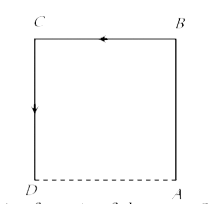A
B
C
D
Text Solution
Verified by Experts
The correct Answer is:
Topper's Solved these Questions
Similar Questions
Explore conceptually related problems
ERRORLESS -MOTION IN ONE DIMENSION-Motion In One Dimension
- A particle moves along the side AB, BC, CD of a square of side 25 m w...
Text Solution
|
- A body has V, 2 2 and 3v in first 2/3 of distance S, second 1/3 of S a...
Text Solution
|
- A body covers one-third of its jurney with speed v(1), next one-third ...
Text Solution
|
- The displacement of the particle varies with time according to the rel...
Text Solution
|
- The acceleration of a particle starting from rest, varies with time ac...
Text Solution
|
- . If the velocity of a particle is (10 + 2 t 2) m/s , then the averag...
Text Solution
|
- . A bullet moving with a velocity of 200 cm / s penetrates a wooden b...
Text Solution
|
- A thief is running away on a straight road in a moving with a speed of...
Text Solution
|
- A car A is travelling on a straight level road with a uniform speed of...
Text Solution
|
- The speed of a body moving with uniform acceleration is u. This speed ...
Text Solution
|
- Two trains one of length 100m and another of length 125 m, are moving ...
Text Solution
|
- A particle starts from rest with uniform acceleration a. Its velocity...
Text Solution
|
- A point mass starts moving in a straight line with constant accelerati...
Text Solution
|
- A particle is moving in a straight line and passes through a point O w...
Text Solution
|
- A bird flies for 4 seconds with a velocity of |t-2|m//sec. In a straig...
Text Solution
|
- A particle is projected with velocity V(0)along axis x . The decelera...
Text Solution
|
- A body is projected vertically up with a velocity v and after some ti...
Text Solution
|
- A stone is dropped from a height h. Simultaneously, another stone is t...
Text Solution
|
- Four marbles are dropped from the top of a tower one after the other w...
Text Solution
|
- Four marbles are dropped from the top of a tower one after the other w...
Text Solution
|
